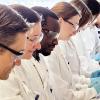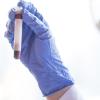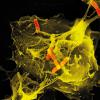The role of the biomedical scientist has evolved, but more work is needed to change public awareness.

Names are important; having the right name is even more important. Any company launching a new product, or re-launching an established product, will undertake extensive market research to ensure the product name represents the essence and quality of the product. The same is true of jobs and professions: the evolution of the ambulance driver into an ambulance paramedic reflects the repositioning of a role in the public mind to more appropriately reflect the increased knowledge and skills required of the profession.
The role of the biomedical scientist has also changed, but unfortunately the recognition of our profession has not been taken up in the way that it has been for the ambulance paramedics. A close friend of mine is currently involved in a classroom “come as someone who works in a hospital” day and I have been tasked with finding appropriate items. Imagine my shock horror when she said how about a doctor or a “lab tech”? Amazingly, we’re still friends, but I can’t recall any other outdated title with such enduring tenacity as “lab tech”. It seems to be more challenging than the twelve labours of Hercules to embed “scientist” in to the minds and language of anyone outside of this profession.
With Biomedical Science Day approaching, I am about to drag out and dust off my “lab tech” soap box and ask everyone organising a Biomedical Science Day event to use the word “scientist” at every conceivable opportunity. I suppose we do have something to be grateful for and that is that the title “Medical Laboratory Scientific Officer” died a quietly unmourned death. Oh what a curse it was. It brings to mind the words of Lewis Carroll in Through the Looking-Glass: “With a name like yours, you might be any shape, almost.”.
I want to conclude with a word of warning to all our Biomedical Science Day planners. I once organised a laboratory open day, which I saw as the ideal opportunity to introduce a captive audience to biomedical scientists, their role in cervical screening, and the diagnostic possibilities of a good, cellular fine needle aspiration biopsy.
In my enthusiasm, I totally overlooked the fact that a professional absence of squeamishness is not necessarily mirrored by the general public. I’m not sure if it was my description of a colposcopic biopsy, the sight of me demonstrating an endocervical brush on a brightly coloured plastic cervix or the prospect of an encounter with a loaded biopsy gun, but by the time the second visitor had fainted, I knew it was an open day not to be forgotten – but, unfortunately, not for all the right reasons...
Sarah May
Deputy Chief Executive




